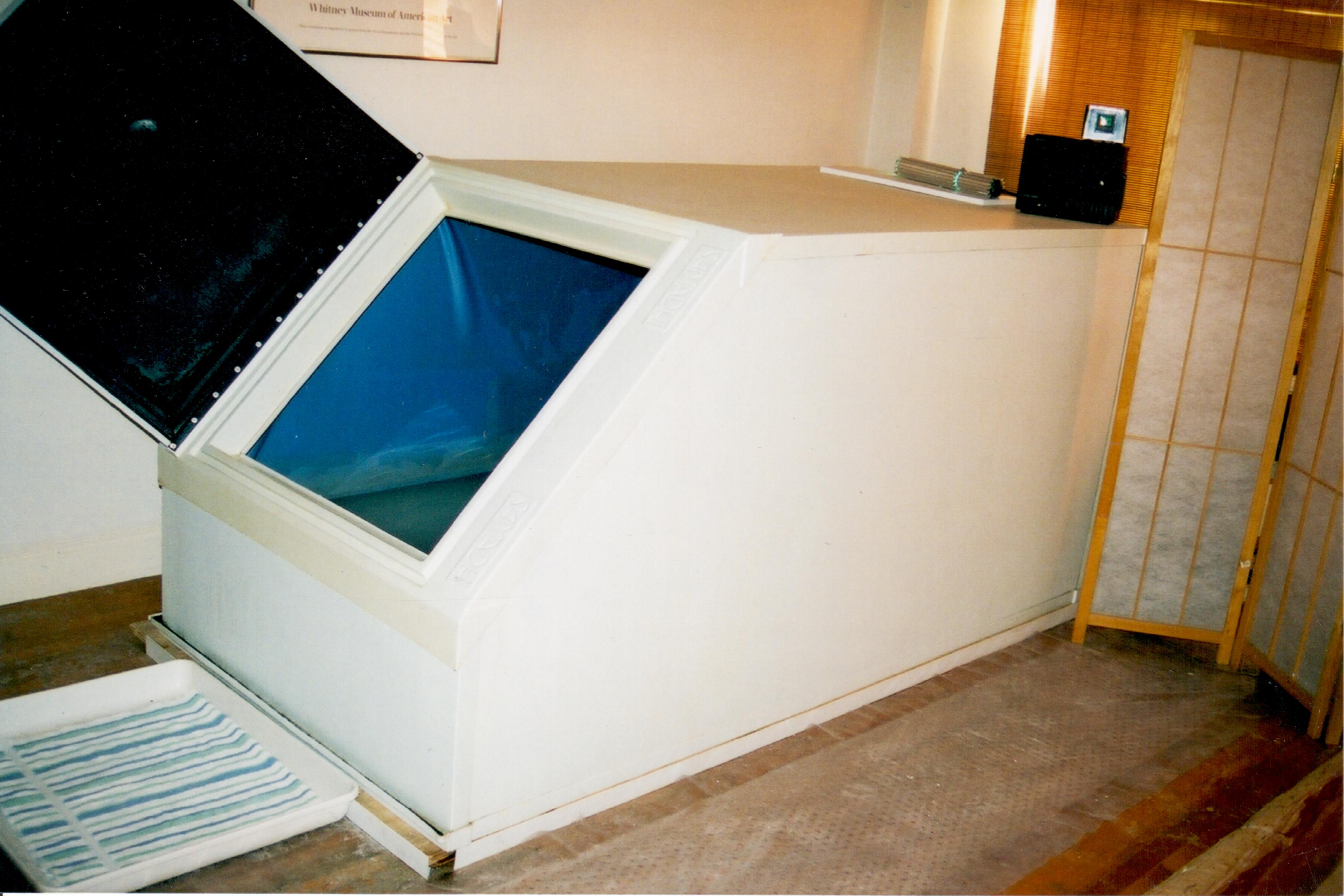Almost a half century ago, I was privileged to work with neuroscientist Dr. John Lilly, inventor of the floatation tank, to create the first commercially available models.
In the 1950s, Lilly began experimenting with floating in a darkened tank of water heated to skin temperature to determine what happens when people are isolated from outside stimuli. He started calling his invention the isolation tank, and he made it part of his life’s work to explore how isolation in a safe space allows one’s consciousness to expand and explore anything imaginable.
In 1972 I was a taciturn computer programmer working at Xerox when I took a five-day workshop with Lilly near Big Bear, California. The experience changed my life, and with John’s blessing and mentorship, I became the first designer and manufacturer of tanks for the public.
Working with John, my partner Lee and I refined the tank by adding enough Epsom salt to the water to allow people to float effortlessly. We then re- christened it the “floatation tank” and began offering the experience of floating in our home while designing the first commercially available tanks.

Although they are frequently referred to as “sensory deprivation tanks,” this is a misnomer. Rather, they are sensory enhancement tanks — enhancing our capacity for sensitivity to ourselves.
Removing exterior distractions reveals how we distract ourselves and allows us to observe who we are. For many people who try it, the calming experience of floating in quiet darkness also leaves them with greatly enhanced mental clarity, focus, and creativity.
Why is this? Most of us are familiar with what I call “constant mental chatter.” We spend a good bit of our lives ruminating over the past or worrying about the future. But the experience of floating is different. It allows us to be alive in the moment in a way that only small children and advanced meditators usually experience.
Here are three reasons I call the floatation tank a time machine to the present:
- Floating frees us from mental chatter, allowing us to be present and available to what is happening.
- Removing distractions increases our attention and ability to focus.
- Exploring our inner space makes us more fearless, confident, and creative.
These three benefits — presence and freedom from mental chatter, increased focus and attention, and fearlessness and self-assuredness — all allow us be more functional at work and in our relationships. The result is a much fuller life.
Almost 50 years of floating has convinced me there are perhaps as many ways to use the tank as there are people, but here are three you may find useful:
- Just let happen whatever happens. One reason we live in a state of constant mental chatter is that we rarely process events that have happened to us, and we don’t prepare for future. The tank provides time and space to process the past, although it may take several sessions in the tank to get to this point.
- Explore creative solutions. When we first built a factory to manufacture tanks, we had to do all our own tooling. I found I could use time floating in the tank to design tools to accomplish particular tasks. After designing a tool, I would mentally go through every step of building it. Often I would find a mistake in my design, so I would redesign and rebuild it in my mind. Then I would get out of the tank, go over to the factory and fabricate the tool in a half or a third of the time it would have taken me otherwise.
- Face and overcome fears. Floating in quiet darkness provides a safe space to examine our fears, worries and problems; the calm and tranquility to put them into perspective; and time to process and potentially solve them. This makes us more fearless and confident.
Like spending time in meditation and mindfulness, the benefits of floating are cumulative and long lasting. I am probably 20 times as creative now outside the tank as I used to be inside the tank — and I used to be much more creative while floating than I was outside.
We have found that many people need to float three to five times before they get a sense of the potential of floating. I recommend doing this on consecutive days if possible. Anything new takes a bit of time to learn. As you become accustomed to floating, you will probably find your own unique ways to use the experience to your benefit.


